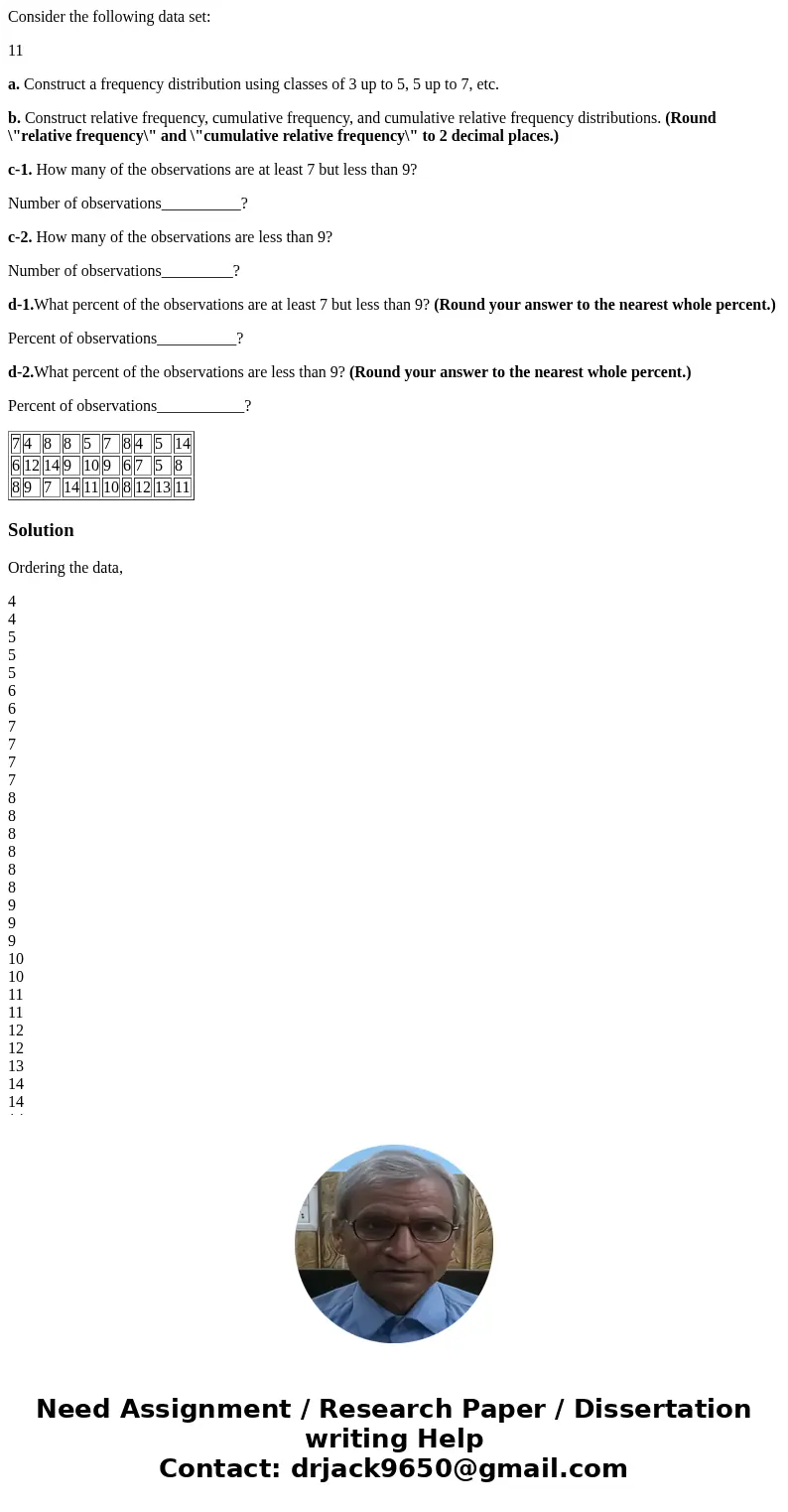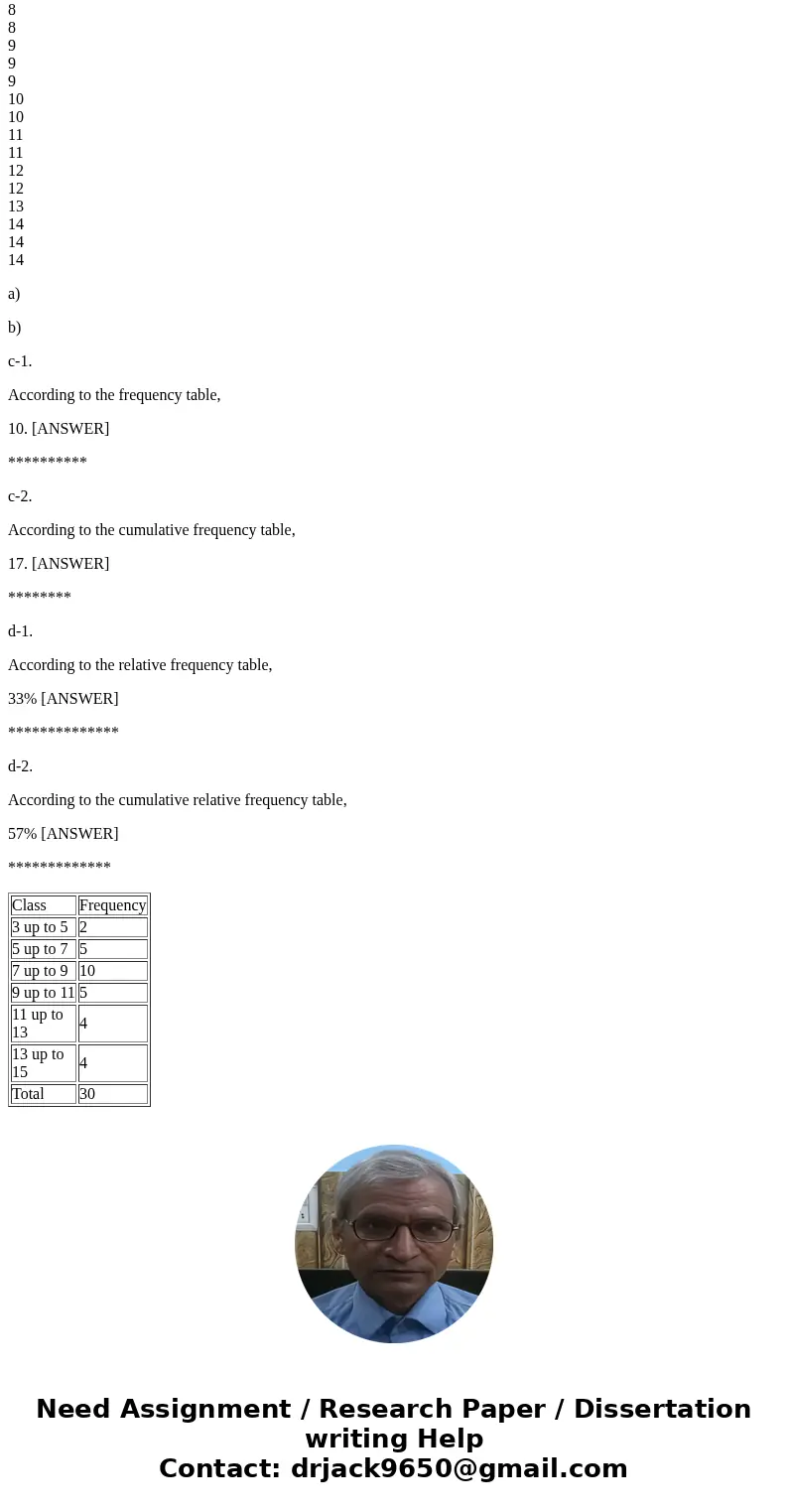Consider the following data set 11 a Construct a frequency d
Consider the following data set:
11
a. Construct a frequency distribution using classes of 3 up to 5, 5 up to 7, etc.
b. Construct relative frequency, cumulative frequency, and cumulative relative frequency distributions. (Round \"relative frequency\" and \"cumulative relative frequency\" to 2 decimal places.)
c-1. How many of the observations are at least 7 but less than 9?
Number of observations__________?
c-2. How many of the observations are less than 9?
Number of observations_________?
d-1.What percent of the observations are at least 7 but less than 9? (Round your answer to the nearest whole percent.)
Percent of observations__________?
d-2.What percent of the observations are less than 9? (Round your answer to the nearest whole percent.)
Percent of observations___________?
| 7 | 4 | 8 | 8 | 5 | 7 | 8 | 4 | 5 | 14 |
| 6 | 12 | 14 | 9 | 10 | 9 | 6 | 7 | 5 | 8 |
| 8 | 9 | 7 | 14 | 11 | 10 | 8 | 12 | 13 | 11 |
Solution
Ordering the data,
4
4
5
5
5
6
6
7
7
7
7
8
8
8
8
8
8
9
9
9
10
10
11
11
12
12
13
14
14
14
a)
b)
c-1.
According to the frequency table,
10. [ANSWER]
**********
c-2.
According to the cumulative frequency table,
17. [ANSWER]
********
d-1.
According to the relative frequency table,
33% [ANSWER]
**************
d-2.
According to the cumulative relative frequency table,
57% [ANSWER]
*************
| Class | Frequency |
| 3 up to 5 | 2 |
| 5 up to 7 | 5 |
| 7 up to 9 | 10 |
| 9 up to 11 | 5 |
| 11 up to 13 | 4 |
| 13 up to 15 | 4 |
| Total | 30 |


 Homework Sourse
Homework Sourse